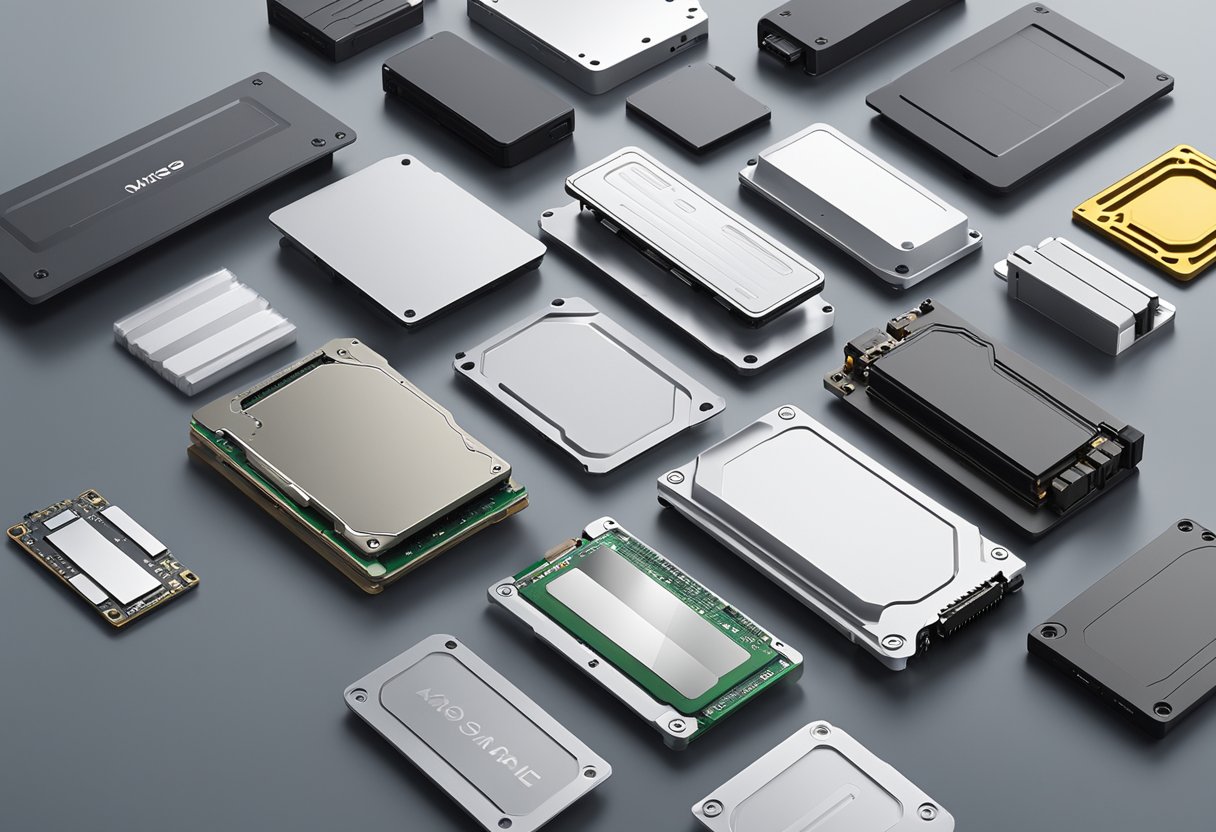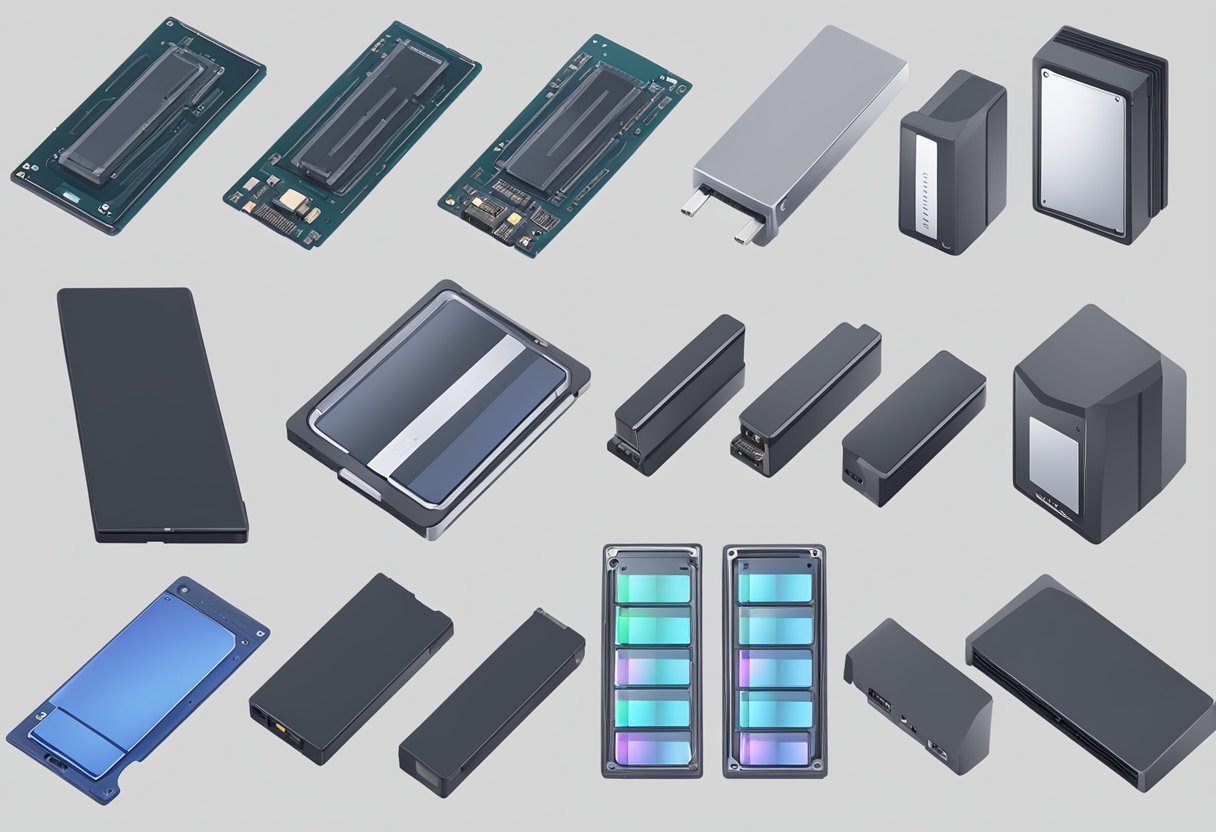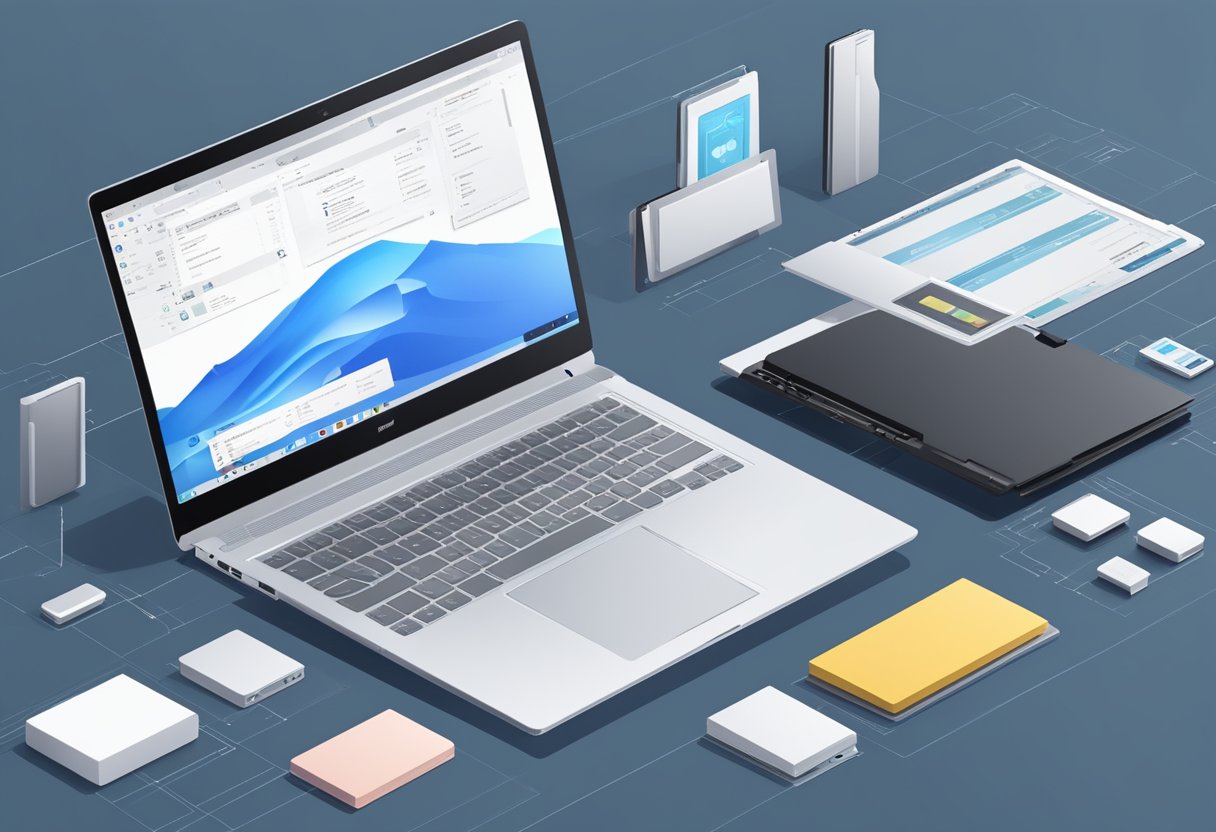Tips for Choosing the Best SSD for Your Needs
When it comes to upgrading a computer, choosing the right solid-state drive (SSD) can make a significant difference in performance and speed. Selecting the best SSD depends on factors like storage capacity, speed, and form factor. With various options available today, it’s essential to understand the differences among SSD types and how they fit your specific needs.

The landscape of SSD technology has evolved rapidly, making it vital for buyers to stay informed. From PCIe NVMe drives that offer top speeds for gamers and professionals to budget-friendly SATA models perfect for casual users, knowing the right fit for their usage is key. This guide will help simplify the selection process, ensuring that anyone can make an informed decision on the right SSD.
Before making a purchase, it’s also important to consider compatibility with existing systems and future needs. With the right knowledge, selecting an SSD can be easy and rewarding, leading to improved performance and data security.
Key Takeaways
- Different SSD types cater to various performance and budget needs.
- Compatibility with devices is crucial for optimal performance.
- Understanding storage capacity helps in making the right choice for individual usage.
Understanding SSD Technology
SSDs, or solid-state drives, are essential for modern computing. They use NAND flash memory to store data quickly and efficiently. Different types of SSDs cater to various needs, so it’s vital to understand their functions and technology.
The Basics of SSDs
An SSD replaces traditional hard disk drives (HDDs) by using flash memory instead of spinning disks. This design allows for faster data access and lower power consumption. SSDs have no moving parts, making them more durable and reliable.
The speed of an SSD is measured in read and write performance—higher numbers mean quicker data transfer. Most SSDs connect through SATA or NVMe interfaces. SATA SSDs are slower and more common, while NVMe drives offer superior speed due to direct connections to the motherboard.
Types of SSDs
There are several types of SSDs, each with specific use cases:
-
2.5-inch SATA SSDs: Commonly used in laptops and desktops, resembling traditional hard drives. They are easy to install but are limited by the SATA interface speed.
-
M.2 NVMe SSDs: Small and powerful, they connect directly to the motherboard. With faster performance, they are ideal for gaming and high-performance tasks.
-
PCIe SSDs: These drives use the PCIe interface to achieve higher speeds. They are suitable for applications requiring significant data transfer.
Choosing the right type ensures compatibility and meets specific performance needs.
NAND Flash Memory Explained
NAND flash memory is the core technology behind SSDs. It stores data in memory cells using transistors. This design allows SSDs to hold large amounts of data in a compact space.
NAND can be classified into several types:
-
SLC (Single-Level Cell): Stores one bit per cell. It offers high speed and durability but is more expensive.
-
MLC (Multi-Level Cell): Stores two bits per cell. It balances cost and performance but has a shorter lifespan.
-
TLC (Triple-Level Cell): Stores three bits per cell. This type is common in consumer SSDs, providing more storage for a lower cost, but it has slower write speeds.
Each type of NAND has its advantages and disadvantages, making it essential to choose based on usage. Proper knowledge of SSD types and NAND technology can guide users to make informed choices.
SSD Form Factors

When selecting an SSD, understanding its form factor is essential. The right form factor affects compatibility, speed, and storage options. Here’s a closer look at the most common SSD types available today.
2.5-Inch SATA Drives
2.5-inch SATA drives are one of the most traditional SSD types. They use the SATA interface, making them compatible with many older computers and laptops.
These drives are typically easy to install due to their standard size.
- Capacity: Common sizes range from 256GB to 4TB, providing ample space for most users.
- Speed: While SATA SSDs are faster than hard drives, they are slower than NVMe options. Most have read speeds around 500 MB/s.
These drives are ideal for those who want a budget-friendly upgrade from HDDs or need reliable internal storage.
M.2 SSDs
M.2 drives are known for their compact size and versatility. They connect directly to the motherboard and come in different lengths, with M.2 2280 being the most common.
M.2 SSDs can use either SATA or PCIe interfaces, allowing for varying performance levels.
- Speed: PCIe-based M.2 SSDs can offer speeds up to 7000 MB/s, significantly faster than SATA.
- Use Cases: They are perfect for gaming, video editing, and high-performance tasks.
The small form factor also enables better airflow and more efficient use of space in tight builds.
PCIe Add-In Cards
PCIe add-in cards are a type of SSD that slots directly into a PC’s motherboard through a PCIe slot. They are larger and usually offer superior performance.
- Speed: These drives provide some of the fastest speeds available, reaching up to 8000 MB/s.
- Capacity: They can come in high capacities, making them great for heavy storage needs.
They are a solid choice for gamers and professionals needing fast data transfer and ample storage.
External SSDs
External SSDs provide portable storage solutions, perfect for users who need to transport data easily. They connect via USB and can work with various devices.
- Size and Portability: Most external SSDs are compact and lightweight, making them easy to carry.
- Speed: USB 3.1 and USB-C connections support faster transfer speeds, often around 1000 MB/s.
External SSDs are useful for backups, data transfer between computers, or expanding storage on laptops without internal upgrades.
Each SSD form factor has unique benefits, making it essential for users to choose according to their needs and device compatibility.
Performance Metrics
When selecting an SSD, understanding performance metrics is crucial. Key aspects like read and write speeds, data transfer rates, and TBW (terabytes written) play a significant role in overall SSD performance, impacting responsiveness and system boot times.
Read and Write Speeds
Read and write speeds are fundamental metrics for SSD performance. Read speed indicates how quickly data can be accessed, while write speed shows how fast data can be stored.
Typical Read/Write Speed Ranges:
- SATA SSDs: Up to 550 MB/s
- PCIe 3.0 NVMe SSDs: Up to 3,500 MB/s
- PCIe 4.0 NVMe SSDs: Up to 7,000 MB/s
Higher speeds lead to faster loading times for applications, games, and files. This means shorter boot times and improved system responsiveness. Users should match SSD speeds with their usage needs, particularly for gaming or video editing, where speed greatly matters.
Data Transfer Speeds
Data transfer speeds describe how efficiently an SSD moves data in and out. This can be different from read/write speeds.
Fast Data Transfer Impacts:
- Faster file transfers during system backups
- Rapid loading of large programs or files
- Smooth multitasking capabilities
For those considering PCIe SSDs, it’s essential to note that they generally support higher data transfer speeds compared to SATA SSDs. This attribute greatly benefits tasks such as video rendering or running multiple heavy applications.
Understanding TBW
TBW, or terabytes written, refers to the total amount of data that can be written to an SSD over its lifespan. Higher TBW ratings indicate longer drive longevity.
TBW Ratings:
- Entry-level SSDs: Around 150-200 TBW
- Mid-range SSDs: 300-600 TBW
- High-performance SSDs: 1,200 TBW or more
Users should consider TBW especially if their work involves heavy writing tasks. This metric helps predict when an SSD may need replacement. It’s an important factor that affects not only performance but also overall cost-effectiveness over time.
Interface and Compatibility
Choosing an SSD requires understanding the interfaces and compatibility that affect performance and installation. Different interfaces offer varying speeds and compatibility with various devices.
SATA vs PCIe
SATA SSDs are widely compatible with many systems. They use the SATA interface, making them easy to install in both older and newer machines. The maximum speed for SATA III is 6 Gbps, which limits performance for demanding applications.
In contrast, PCIe SSDs provide higher speeds due to a direct connection to the motherboard. There are different versions of PCIe, such as PCIe 3.0, 4.0, and 5.0. Each version offers improved bandwidth:
- PCIe 3.0: Up to 32 Gbps
- PCIe 4.0: Up to 64 Gbps
- PCIe 5.0: Up to 128 Gbps
For users needing fast data transfer, PCIe is typically the better option.
NVMe and Its Benefits
NVMe (Non-Volatile Memory Express) is a protocol designed for SSDs to maximize speed and efficiency. NVMe SSDs often connect using the M.2 port on motherboards. They provide much faster read and write speeds compared to SATA, leveraging the high bandwidth of PCIe.
Benefits of NVMe SSDs include:
- Higher speeds: NVMe utilizes multiple lanes, allowing for simultaneous data transfers.
- Lower latency: Reduced delay in data retrieval leads to faster performance.
- Better power efficiency: Increased efficiency helps extend battery life in laptops.
These advantages make NVMe SSDs ideal for gaming and professional applications requiring fast data access.
Physical and Software Compatibility
When selecting an SSD, physical compatibility is crucial. It’s important to check if the device has an M.2 port, especially for NVMe drives. Not all motherboards support the latest PCIe versions, so verifying specifications is necessary.
Additionally, software compatibility is essential. Some systems may require specific drivers for certain SSDs. Users should ensure their operating system supports the SSD type they are purchasing.
In summary, understanding the compatibility between SSD interfaces and device support helps prevent performance issues and installation problems.
Capacity and Usage Considerations
When selecting an SSD, understanding capacity and usage needs is essential. Different users have varied requirements based on their activities, whether gaming or everyday tasks.
Choosing the Right Capacity
Capacity is a crucial element when picking an SSD. Users should consider their storage needs based on the files they handle daily.
- Basic Options: For light users, a 500GB SSD is often sufficient. It accommodates essential files and applications without much hassle.
- Moderate Use: Those who download media or run several applications may prefer 1TB as a comfortable middle ground. This size balances cost and enough space for most users.
- Heavy Duty: For those managing large files, like video editing or high-end gaming, SSDs up to 4TB or more can provide ample space without sacrificing performance.
Gaming and High-Performance Needs
Gamers typically require more robust storage solutions. High-performance gaming often involves large files and frequent updates.
- Storage Space: Many modern games exceed 100GB each, making a 1TB SSD a minimal choice for serious gamers.
- Performance: Upgrading to a best budget PCIe 4.0 SSD can enhance loading times and overall gaming experience.
- Future-Proofing: Gamers should consider potential future titles and downloads, making a 2TB SSD or larger a wise investment. This decision helps ensure that users don’t run out of space and face performance drops.
Everyday Use and Budget Options
For casual users, budget is often a primary concern. They need reliable storage without unnecessary costs.
- Basic Storage: A 500GB SSD is usually the best choice for simple tasks, like web browsing and document storage.
- Affordable Choices: Many best hard drives provide ample storage at competitive prices. These drives may offer slower speeds but are ideal for those who do not need cutting-edge performance.
- Considerations: Users should weigh their budget against their expected usage. A low-cost 1TB SSD can offer good value for someone who wants extra space without breaking the bank.
Durability and Reliability
When choosing an SSD, durability and reliability are crucial factors. These elements ensure that the drive can withstand daily use and maintain data safety over time. Two major aspects to consider are the SSD lifespan and the warranties offered by different brands.
SSD Lifespan
The lifespan of an SSD is mainly defined by its Total Bytes Written (TBW) rating. This number indicates how much data can be written to the drive during its lifetime. For example, a TBW of 150 TB means the SSD can handle that amount of writing before it may start to fail.
Most consumer SSDs range from 150 TBW to over 3,000 TBW, depending on their intended use. High-performance SSDs often use NAND storage types that enhance durability, such as 3D NAND, which provides better endurance. Monitoring write cycles can help users gauge when to replace the drive.
Warranties and Brand Trust
Warranties vary widely among SSD brands and can indicate reliability. Many SSDs come with warranties ranging from three to five years. Some brands, like Samsung and Crucial, are known for their strong warranty policies. Customers should consider these warranties when making a choice.
Trust in a brand can also stem from reviews and user feedback. Well-reviewed SSDs often prove to be more reliable long-term. Keeping an eye on product reviews can help users select an SSD that not only meets their needs but also stands the test of time.
Top SSD Picks and Reviews
When selecting an SSD, it’s essential to consider various factors, such as speed, capacity, and price. The market is filled with options tailored for different needs, from gaming to budget choices. Here are the top picks that stand out in 2024.
Best Overall SSDs
The Samsung 990 Pro is often regarded as one of the best overall SSDs. It offers exceptional speed, reaching up to 7,000 MB/s read and 5,000 MB/s write rates. This makes it ideal for gaming and demanding applications. Another strong contender is the Crucial T705, which provides a balanced performance with good reliability and competitive pricing. The WD Black SN850X also impresses, offering high speeds and advanced gaming features. These drives combine performance, quality, and value, making them excellent choices for general use.
Top Picks for Gaming
Gamers typically require SSDs with fast load times and high capacity. The Samsung 990 Pro stands out again with its lightning-fast speeds, allowing for smooth gameplay without lag. For those on a tighter budget, the Crucial P3 delivers solid performance for gaming without breaking the bank. The Kingston Fury Renegade is another great option, designed specifically for gamers, enhancing performance in varying scenarios. Each of these drives supports the latest gaming consoles, like the PS5 and Steam Deck, ensuring gamers can enjoy fast load times.
Best Budget-Friendly SSDs
For budget-conscious buyers, value is key. The Crucial P310 offers decent speeds at an affordable price point, suitable for everyday tasks. The Team Group MP44 is another great budget choice, striking a balance between cost and performance, making it suitable for users who require a quick upgrade. Lastly, the Patriot Viper VP4300 stands out with its competitive pricing and reliability. These options provide solid performance without the premium price tag, making them perfect for casual users and those upgrading old systems.
Top Performing NVMe Drives
When it comes to NVMe drives, speed and efficiency are paramount. The Samsung 980 offers outstanding performance with a read speed of up to 3,500 MB/s, making it an excellent value for its price. The WD Black SN850X continues to lead in this category, providing one of the fastest available speeds tailored for gamers and heavy users alike. The Crucial T500 is also worth mentioning, offering great performance at a competitive price. These NVMe drives are built for speed, catering to those who need more from their storage solutions.
Leading SATA SSDs
SATA SSDs remain popular for their reliability and affordability. The Crucial T500 is a notable option, balancing performance and price, making it a great choice for upgrading older systems. The Samsung 870 EVO is another strong pick, known for its durability and consistent performance. Lastly, the Kingston A400 offers an excellent budget-friendly alternative with decent speeds for everyday computing tasks. These SATA SSDs continue to provide reliable solutions for users looking to enhance their system without opting for the latest technology.
Future-Proofing Your SSD Investment

Choosing an SSD is more than just picking a model for now. It’s essential to consider emerging technologies and potential upgrade paths that will keep the drive relevant for years to come.
Emerging Technologies
One critical aspect to consider is the ongoing advancements in SSD technology. Currently, PCI Express 4.0 is widely used, offering faster data transfer speeds than its predecessor, PCI Express 3.0. With speeds reaching up to 32 Gbps, it provides noticeable performance boosts for gaming and large file transfers.
Looking ahead, PCI Express 5.0 is set to revolutionize storage with speeds doubling those of PCIe 4.0. It brings enhanced performance for demanding applications, such as 4K video editing and high-speed gaming. Investing in a PCIe 5.0 SSD can offer better longevity and efficiency, ensuring a smoother experience as software and gaming requirements increase.
Upgrade Paths and Scalability
When selecting an SSD, it’s crucial to consider future upgrade options. Drives using the M.2 form factor provide versatility, allowing easy upgrades as technology evolves. They can support both SATA and NVMe connections, making them suitable for various performance needs.
Moreover, opting for models with higher storage capacities, such as 2TB or 4TB, can help accommodate increasing data demands. Many SSDs come with room for expansion, meaning users can replace or add drives in the future without revamping the entire system. This scalability is particularly important for gamers and content creators who require significant storage space as file sizes continue to grow.
Frequently Asked Questions
Choosing the right SSD involves several important factors. Consideration of gaming needs, size requirements, specifications for laptops, SSD types, compatibility, and performance indicators is essential for making an informed decision.
What factors should I consider when choosing an SSD for gaming purposes?
For gaming, speed is crucial. Look for PCIe NVMe SSDs as they provide faster read and write speeds. Capacity is also important; 1TB is often recommended for modern games.
How do I determine the ideal SSD size for my gaming needs?
A minimum of 500GB is advisable, but 1TB is better for gamers. This ensures ample space for games, updates, and additional content. Think about future needs as game sizes can grow.
Which specifications are most critical when selecting an SSD for my laptop?
Key specifications include the form factor and interface type. Most laptops use 2.5-inch SATA drives or M.2 slots. Check compatibility with the device and opt for a suitable capacity based on storage needs.
What are the differences between SSD types, and how do I choose the best one?
The main SSD types are SATA and NVMe. SATA SSDs are generally slower, while NVMe drives offer higher speeds. For best performance, especially in gaming or heavy tasks, NVMe is the preferred choice.
How can I ensure compatibility between an SSD and my motherboard?
Compatibility can be checked by reviewing the motherboard’s specifications. Look for supported interface types, such as SATA or NVMe, and the physical dimensions to ensure a good fit.
What are the key performance indicators to look for in a high-quality SSD?
Important performance indicators include read and write speeds, endurance rating, and IOPS (input/output operations per second). Higher numbers in these categories typically mean better performance.






Post Comment